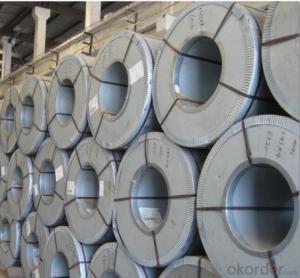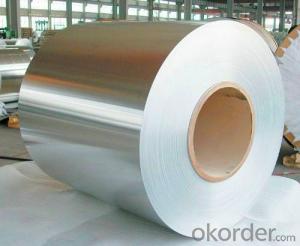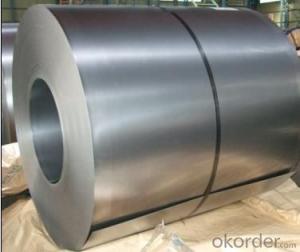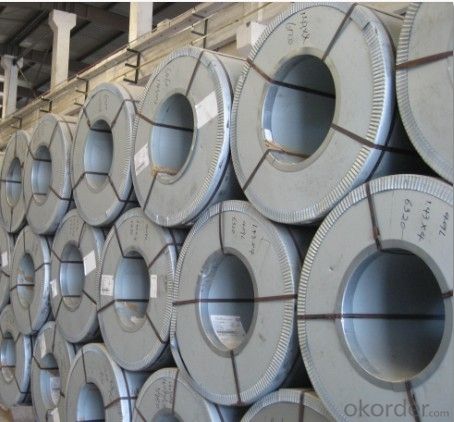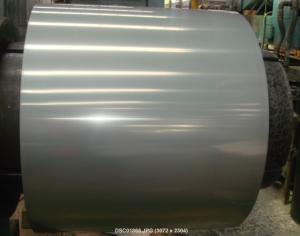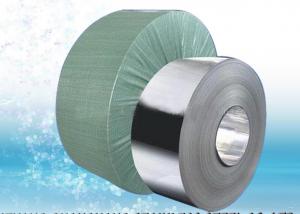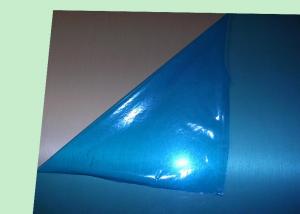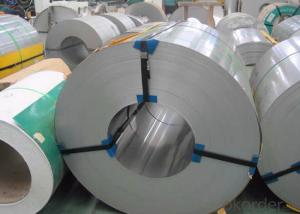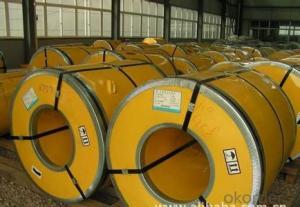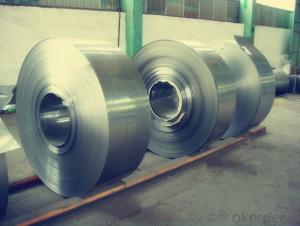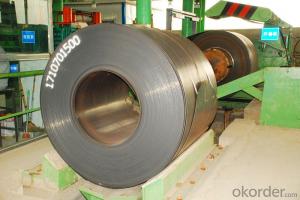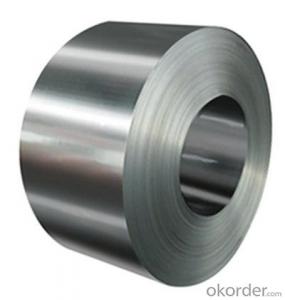Stainless Steel Coil 201 Hot / Cold Rolled Coil Narrow
- Loading Port:
- Lianyungang
- Payment Terms:
- TT OR LC
- Min Order Qty:
- 400 m.t.
- Supply Capability:
- 5000 m.t./month
OKorder Service Pledge
OKorder Financial Service
You Might Also Like
201 Hot Rolled Stainless Steel Coil Specifications
THK:2.3/2.5/3.0/4.0mm
Width:485/510/550/610/1010/1240mm
Face:No.1
201 Hot rolled stainless steel Coil Application
Stainless steel is a production which not easy rust,acid resistance and corrosion resistance,so it is widely
used in light industry,heavy industry,daily necessities and the decoration industry.
201 hot rolled stainless steel coil, use to produce cold rolled stainless steel coil and stainless steel tube, pipe.
201 Hot Stainless Steel Coil Chemical Composition(WT%)
(C):≤0.15, (Si):≤0.75, (Mn):5.5~7.50, (Cr):16.0~18.0, (N):≤0.25, (Ni):3.50~5.50, (P):≤0.060, (S):≤0.030
201 Hot Rolled Stainless Steel Coil
Strength Of Extension:100,000 To 180,000 Psi;
Yield Strength:50,000 To 150,000 Psi
Elongation :55 To 60%;
Modulus Of Elasticity:29,000,000 Psi;
Density :.280lbs/Cubic Inch(7.93g/Cm3)
- Q: Are 111 stainless steel strips suitable for welding?
- Yes, 111 stainless steel strips are suitable for welding.
- Q: How are stainless steel strips measured?
- Stainless steel strips are typically measured using two main parameters: width and thickness. The width refers to the measurement across the strip from one edge to the other, while the thickness measures the distance from one surface to the opposite surface. These measurements are crucial in determining the suitability and functionality of the stainless steel strip for various applications. The width and thickness can be measured using specialized tools such as calipers or micrometers, ensuring accurate and precise measurements. Additionally, industry standards and specifications may exist for stainless steel strips, which provide specific guidelines for measuring and tolerances. It is essential to follow these standards to ensure consistency and quality in the final product.
- Q: Are stainless steel strips recyclable?
- Yes, stainless steel strips are recyclable. Stainless steel is a highly valuable and versatile material that can be recycled repeatedly without losing its properties. The recycling process involves melting down the stainless steel strips and transforming them into new products. This not only helps in conserving natural resources but also reduces the environmental impact of mining and manufacturing new stainless steel. Recycling stainless steel strips is a sustainable and responsible approach that contributes to a circular economy.
- Q: How do stainless steel strips perform in abrasive environments?
- Stainless steel strips are renowned for their exceptional performance in abrasive environments, thanks to their unique composition featuring a significant chromium content. This composition grants stainless steel strips excellent resistance against corrosion, oxidation, and wear, making them highly durable and capable of enduring the harsh conditions typically found in abrasive environments. The presence of chromium in stainless steel strips creates a protective layer known as a passive film on the surface. This film acts as a barrier against corrosive elements and possesses the remarkable ability to self-repair. If the passive film becomes damaged, it will swiftly regenerate, further enhancing the strip's resistance to abrasion. Additionally, the mechanical properties of stainless steel strips contribute significantly to their success in abrasive environments. With high tensile strength and toughness, these strips can withstand the impact and forces exerted by abrasive particles. As a result, stainless steel strips are ideal for applications that involve constant contact with abrasive materials, such as in the mining, construction, or manufacturing industries. Moreover, stainless steel strips are available in a variety of grades, each tailored to meet specific requirements. For instance, duplex stainless steels exhibit superior resistance to pitting and crevice corrosion, making them particularly well-suited for extremely corrosive abrasive environments, such as those found in marine or chemical processing industries. In summary, stainless steel strips excel in abrasive environments due to their corrosion resistance, self-repairing passive film, and high mechanical strength. Their ability to withstand wear and tear makes them a dependable choice for applications where constant exposure to abrasive substances is anticipated.
- Q: What are the advantages of using precision rolled 111 stainless steel strips?
- Precision rolled 111 stainless steel strips offer several advantages. Firstly, they provide uniform and reliable products due to the precision rolling process, which ensures consistent thickness and width. This is especially important in industries like electronics and precision instruments that require precise measurements. Secondly, 111 stainless steel is highly resistant to corrosion, making it ideal for applications exposed to harsh environments, chemicals, or moisture. The corrosion resistance extends the lifespan of the strips, reducing the need for frequent replacements and maintenance. Additionally, these strips have a high strength-to-weight ratio, offering exceptional strength despite being lightweight. This makes them suitable for industries like aerospace, automotive, and construction, where weight reduction is crucial for fuel efficiency and structural integrity. Moreover, precision rolled 111 stainless steel strips are easily shaped and molded, allowing for versatility in various applications. Whether for decorative purposes or functional components, these strips can be bent, stamped, or formed to meet specific design requirements. Lastly, these strips have an aesthetic appeal with a smooth surface finish and lustrous appearance. This makes them highly desirable for decorative applications like architectural accents, jewelry, or kitchenware. The strips can be polished or brushed to achieve different finishes, offering flexibility in design options. In conclusion, the advantages of precision rolled 111 stainless steel strips include consistent thickness and width, excellent corrosion resistance, high strength-to-weight ratio, exceptional formability, and aesthetic appeal. These qualities make them a popular choice in diverse industries, ensuring reliable performance and longevity for their intended applications.
- Q: What are the factors affecting the formability of 111 stainless steel strips?
- 111 stainless steel strips can be affected by various factors: 1. The formability of the stainless steel strip is greatly influenced by its alloy composition. The presence of elements like chromium, nickel, and molybdenum in different proportions can have a significant impact. Increased amounts of certain elements can enhance the strip's ability to be shaped according to desired specifications. 2. The size of the grains within the stainless steel strip also affects its formability. Smaller grain sizes generally result in improved formability due to a more uniform and consistent material structure. 3. Mechanical properties, such as strength, ductility, and hardness, play a crucial role in determining the formability of the stainless steel strip. Strips with higher ductility are generally easier to shape without experiencing cracks or breakages. 4. The surface condition of the stainless steel strip, including roughness and cleanliness, has an impact on its formability. A smooth and clean surface reduces friction and facilitates shaping without defects. 5. The temperature at which the stainless steel strip is formed can also influence its formability. Higher temperatures soften the material, making it more malleable and easier to shape. 6. Lubrication during the forming process is crucial for improving formability. The use of lubricants reduces friction, preventing galling, scratching, or sticking during forming operations. 7. The method used to form the stainless steel strip, such as bending, stretching, or deep drawing, affects its formability. Different forming methods exert varying levels of stress and strain on the material, impacting its ability to be shaped without failure. In conclusion, a range of factors, including alloy composition, grain size, mechanical properties, surface condition, temperature, lubrication, and forming method, all contribute significantly to the formability of 111 stainless steel strips.
- Q: Can stainless steel strips be used in the production of electrical enclosures?
- Yes, stainless steel strips can be used in the production of electrical enclosures. Stainless steel is a versatile and durable material that is widely used in various industries, including electrical engineering. It offers excellent corrosion resistance, high strength, and heat resistance, making it suitable for enclosing electrical components and protecting them from external elements. Stainless steel strips can be formed, cut, and welded into the desired shapes and sizes to create enclosures that meet the specific requirements of electrical applications. Additionally, stainless steel has good electrical conductivity, which is crucial for ensuring proper grounding and electromagnetic compatibility within the enclosure. Therefore, utilizing stainless steel strips in the production of electrical enclosures is a common and reliable choice.
- Q: How do you prevent galling of stainless steel strips?
- To prevent galling of stainless steel strips, there are a few measures that can be taken: 1. Lubrication: Applying a lubricant to the surfaces in contact can significantly reduce the risk of galling. Lubricants such as anti-seize compounds, oils, or greases can create a barrier between the two surfaces, reducing friction and minimizing the chances of galling. 2. Surface Finish: Ensuring that the stainless steel strips have a smooth surface finish can help prevent galling. Rough or uneven surfaces can lead to increased friction, making galling more likely. Polishing or grinding the surfaces can help create a smoother finish, reducing the risk of galling. 3. Material Selection: Choosing the right grade of stainless steel can also play a role in preventing galling. Some grades of stainless steel have better resistance to galling than others. For instance, austenitic stainless steels like 304 and 316 are known to have good anti-galling properties due to their higher nickel content. 4. Proper Tightening: When fastening stainless steel strips together, it is important to ensure that the correct torque is applied. Over-tightening can increase the risk of galling, as excessive pressure can cause the surfaces to seize. Using a torque wrench or following manufacturer guidelines for tightening can help prevent galling. 5. Avoidance of Metal-on-Metal Contact: If possible, using non-metallic materials between stainless steel strips can help prevent galling. This could include using plastic or rubber washers or inserts to create a barrier between the metal surfaces, reducing the friction and likelihood of galling. Overall, a combination of lubrication, surface finish, material selection, proper tightening, and avoiding metal-on-metal contact can help effectively prevent galling of stainless steel strips.
- Q: How do stainless steel strips handle exposure to chemicals?
- Stainless steel strips are highly resistant to the effects of exposure to chemicals. This is due to the inherent properties of stainless steel, which include high corrosion resistance and the ability to withstand a wide range of chemical substances. Stainless steel contains a minimum of 10.5% chromium, which forms a passive, self-repairing oxide layer on the surface when exposed to oxygen. This oxide layer acts as a protective barrier, preventing the steel from reacting with chemicals and thus preserving its integrity. Additionally, stainless steel contains other elements such as nickel and molybdenum, which further enhance its resistance to chemical attack. As a result, stainless steel strips are widely used in industries where they come into contact with various chemicals, such as pharmaceuticals, food processing, and chemical manufacturing. They can withstand exposure to acids, alkalis, solvents, and other corrosive substances, maintaining their strength and durability over time. However, it is important to note that the exact resistance of stainless steel to specific chemicals may vary, and it is advisable to consult the manufacturer or refer to corrosion resistance charts for more detailed information on the compatibility of stainless steel with specific chemicals.
- Q: Can stainless steel strips be used in automotive industries?
- Yes, stainless steel strips can be used in automotive industries. Stainless steel offers excellent corrosion resistance, durability, and high strength-to-weight ratio, making it suitable for various automotive applications such as exhaust systems, fuel tanks, decorative trims, and structural components.
Send your message to us
Stainless Steel Coil 201 Hot / Cold Rolled Coil Narrow
- Loading Port:
- Lianyungang
- Payment Terms:
- TT OR LC
- Min Order Qty:
- 400 m.t.
- Supply Capability:
- 5000 m.t./month
OKorder Service Pledge
OKorder Financial Service
Similar products
Hot products
Hot Searches
Related keywords
